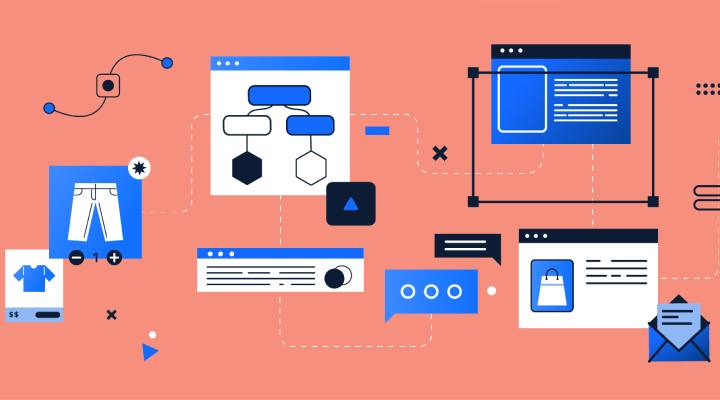In the competitive world of B2B business, omnichannel marketing has become a cornerstone for success. To truly stand out, companies must focus on enhancing customer satisfaction, and this can be achieved through effective visualization and optimization strategies.

I. The Significance of Visualizing and Optimizing Customer Satisfaction in B2B Omnichannel Marketing
A. Strengthening Customer Relationships
- Understanding Customer Needs
- Visualizing customer satisfaction data allows B2B marketers to gain a clear picture of what their clients truly need. For example, by analyzing data from various touchpoints like sales calls, email interactions, and website visits, a software – as – a – service (SaaS) provider can identify that many B2B clients are struggling with a particular feature of their product. This insight helps in tailoring marketing efforts to address these pain points.
- Building Trust
- When a B2B company optimizes its omnichannel experience based on customer satisfaction data, it shows clients that their opinions are valued. A manufacturing equipment supplier that adjusts its product demonstrations across different channels according to customer feedback builds trust, making clients more likely to continue the business relationship.
B. Gaining a Competitive Edge
- Differentiating from Competitors
- In a crowded B2B market, customer satisfaction can be a key differentiator. By visualizing how customers interact with different channels and what makes them satisfied or dissatisfied, a company can create a unique omnichannel experience. For instance, a logistics firm that offers a seamless tracking experience across its website, mobile app, and customer service channels stands out from competitors.
- Increasing Market Share
- Optimizing customer satisfaction leads to increased customer loyalty. Satisfied B2B clients are more likely to recommend the company to others in their industry. A B2B marketing agency that consistently improves its services based on customer satisfaction data can attract new clients, thus increasing its market share.
II. Methods for Visualizing Customer Satisfaction in B2B Omnichannel Marketing
A. Using Data Analytics Tools
- Heatmaps and Click – through Rates
- Heatmaps can be used to visualize where customers are clicking on a B2B company’s website or mobile app. For example, a B2B e – commerce platform can use heatmaps to see which product pages are getting the most attention and which ones are being ignored. Click – through rates (CTR) on emails and ads across different channels can also be analyzed. A marketing automation tool can provide data on CTR, showing which marketing messages are most effective in driving customers to take action.
- Customer Journey Mapping
- Create visual maps that illustrate the entire customer journey across all channels. A B2B software company can map out how a potential client goes from initial awareness (through a LinkedIn ad), to research (visiting the company website), to trial (signing up for a free trial), and finally to purchase. This visual representation helps in identifying bottlenecks and areas where customer satisfaction can be improved.

B. Customer Feedback Visualization
- Surveys and Ratings
- Conduct regular customer surveys across all channels. For example, a B2B service provider can send out post – service surveys via email, and also have a rating system on its website and mobile app. Visualize the survey results using bar charts or pie charts. If a majority of clients rate a particular service feature poorly, it’s a clear indication that improvement is needed.
- Text Analysis of Customer Comments
- Use text analysis tools to analyze customer comments from sources like social media, review platforms, and support tickets. A B2B technology firm can identify common themes in customer feedback, such as “slow response time” or “excellent product functionality.” Visualize these themes using word clouds, where the size of the word represents its frequency in the feedback.
III. Strategies for Optimizing Customer Satisfaction in B2B Omnichannel Marketing
A. Channel – Specific Optimization
- Website Optimization
- Ensure that the B2B company’s website is user – friendly and optimized for different devices. A B2B industrial equipment manufacturer should have clear product descriptions, high – quality images, and easy – to – find contact information. Improve page load times, as slow – loading pages can lead to customer dissatisfaction.
- Social Media Engagement
- Actively engage with B2B clients on social media platforms. A B2B marketing agency can respond promptly to comments and messages on LinkedIn, Twitter, and Facebook. Share relevant industry news, case studies, and product updates to keep clients informed and engaged.
B. Cross – Channel Coordination
- Unifying Brand Messaging
- Maintain consistent brand messaging across all channels. A B2B financial services firm should use the same tagline, tone of voice, and brand values in its email marketing, social media posts, and in – person sales pitches. This consistency reinforces the brand in the minds of clients.
- Seamless Customer Transitions
- Enable seamless transitions for customers moving between channels. For example, a B2B software company should ensure that a customer who starts a product inquiry on the website can continue the conversation via email or phone without having to repeat information.

In conclusion, visualizing and optimizing customer satisfaction is essential for enhancing B2B omnichannel marketing. By understanding the significance, using effective visualization methods, and implementing optimization strategies, B2B companies can improve customer relationships, gain a competitive edge, and achieve long – term success in the market.



